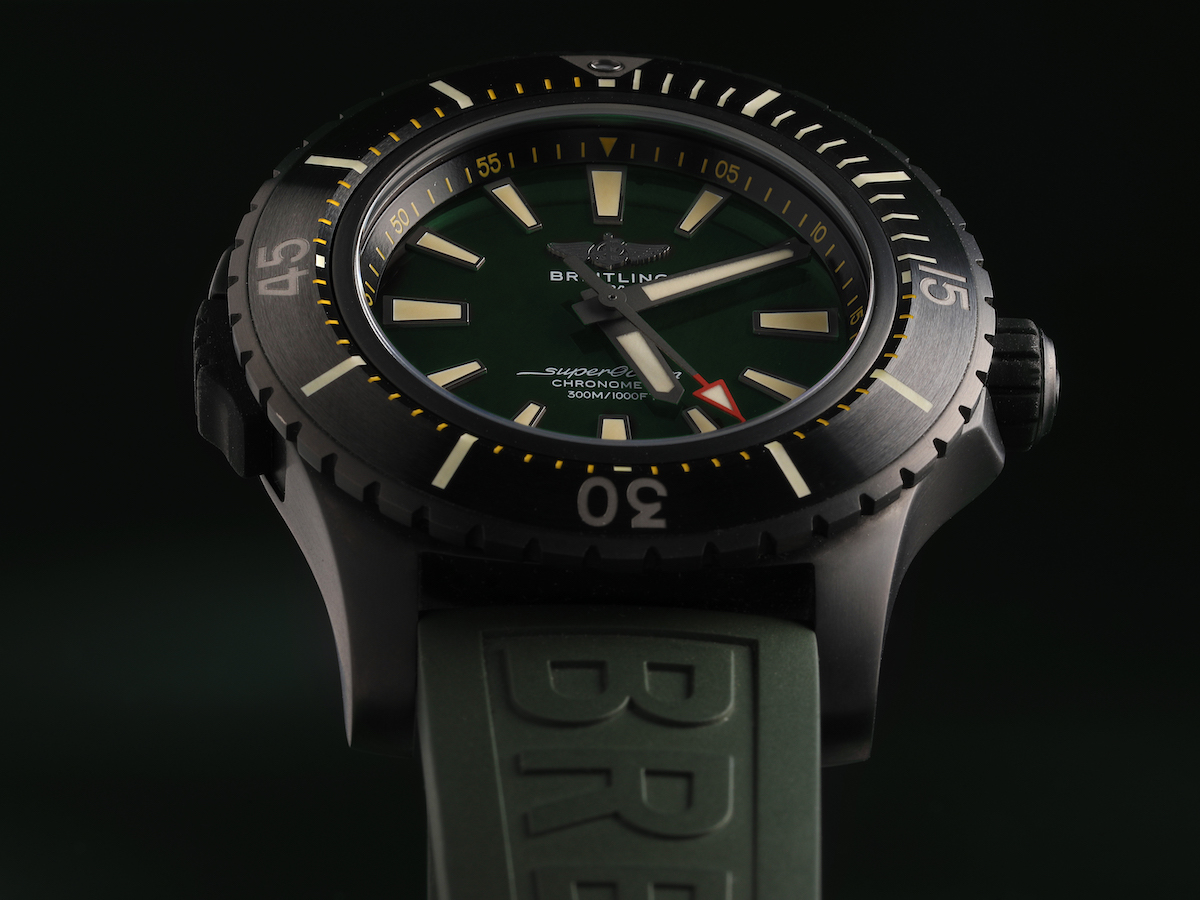Dive watches are the cream of the crop when it comes to timepieces. They’re built to last, they look great, and they have superior water resistance.
Not all dive watches are created equal though. There are a few things you should look out for in order to make sure that you’re getting a “true” dive watch.
If you look up the definition of a dive watch in the famous Dictionary of Horology by Berner, you find that dive watches are defined by two things. They are timepieces that can be immersed to a minimum of 100m and satisfy the requirements set in place by ISO standard 6425. What exactly are those requirements?
What is the ISO 6425 and how did it come about?
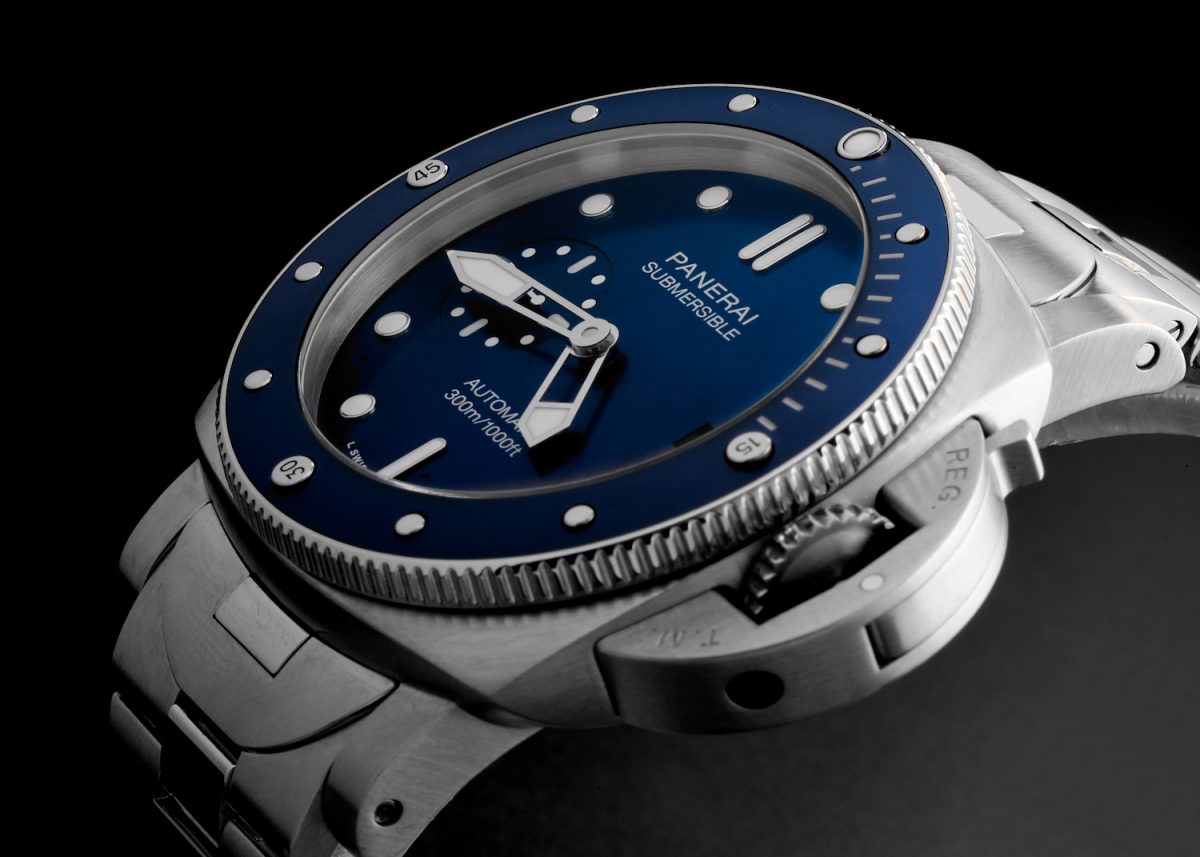 The Panerai Submersible is an ISO 6425-certified dive watch
The Panerai Submersible is an ISO 6425-certified dive watch
The ISO 6425 is a standard created by the International Organization for Standardization (ISO), which sets internationally recognized guidelines for many things. The purpose of this particular standard is to define what makes a dive watch “true” and therefore eligible to be certified as such.
The ISO 6425 was first published in 1996 and has since been revised twice: once in 2000, then again in 2009. The most recent iteration of this document details how manufacturers must test their dive watches against various criteria in order to earn certification as an ISO 6425-certified dive watch.
The guidelines are long and involved, to the point where most collectors aren’t as familiar with them as they are with chronometer standards (COSC). Sections 6 and 7 of the ISO 6425 deal specifically with the physical specifications for true dive watches.
Only the models that have passed the tests under the ISO 6425 can be stamped with the word ‘diver’ on the dial. If you’re wondering if your watch is legit, look for that stamp.
<>
Water Resistance
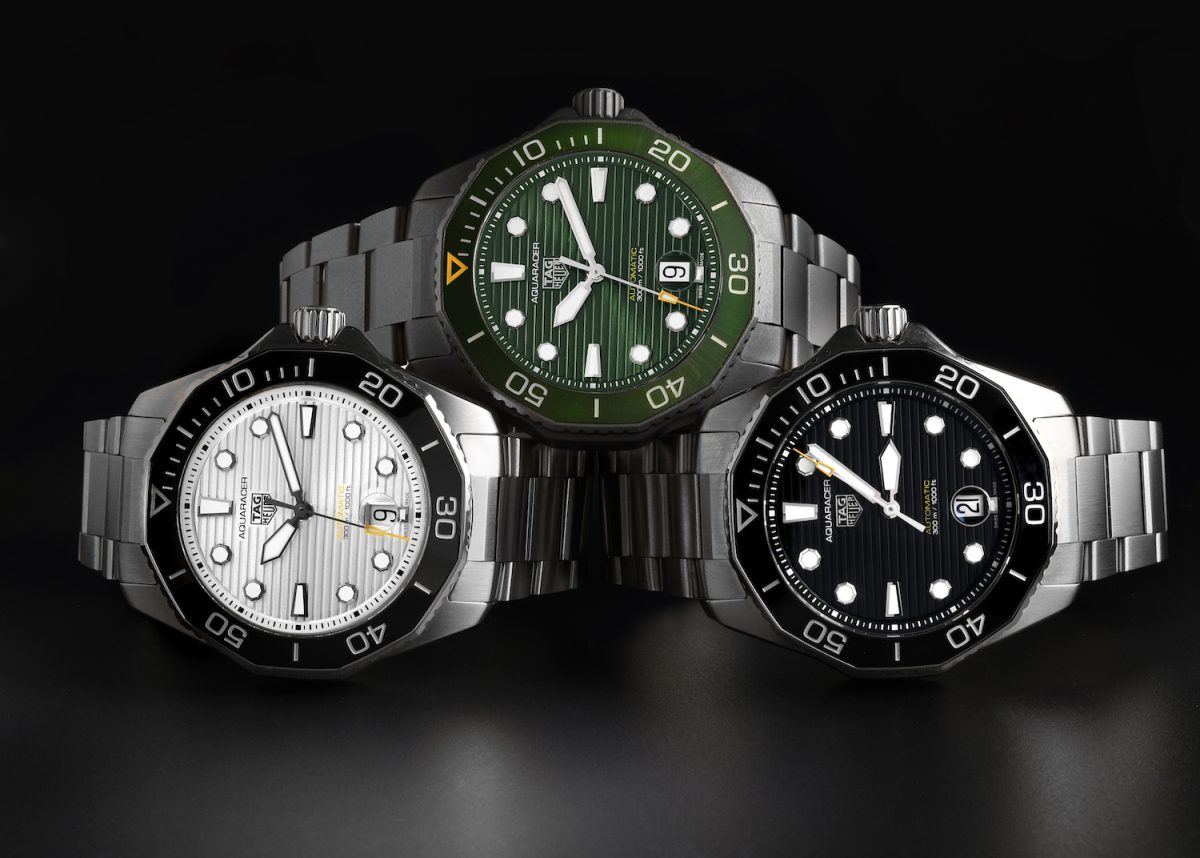 The TAG Heuer Aquaracer is water resistant for up to 300 meters
The TAG Heuer Aquaracer is water resistant for up to 300 meters
Water resistance is defined by ISO 6425, and it states that: “Water resistance is the ability of a watch to withstand the effects of water immersion.”
This means that if your watch says it’s waterproof at 100 meters (330 feet), then it should be able to handle being submerged under 100 meters without breaking down or failing in any way. However, this does not mean that if you take your 100m/330ft rated watch into deeper waters than its rating, it will still work flawlessly.
The condensation test mentioned in the next section is performed before an overpressure water resistance test. The watch is exposed to pressures that exceed their rated depth by 125%. The watch is held at that pressure for two hours and then quickly returned to the equivalent of the pressure at 3 meters. It sits at this pressure for another hour. The condensation test is repeated in order to check for moisture leaks.
This over pressure test must be performed on each individual watch to satisfy the standards. The other tests mentioned in this article can be performed on a sample of the model of watch under scrutiny.
<>
Condensation and Temperature Resistance
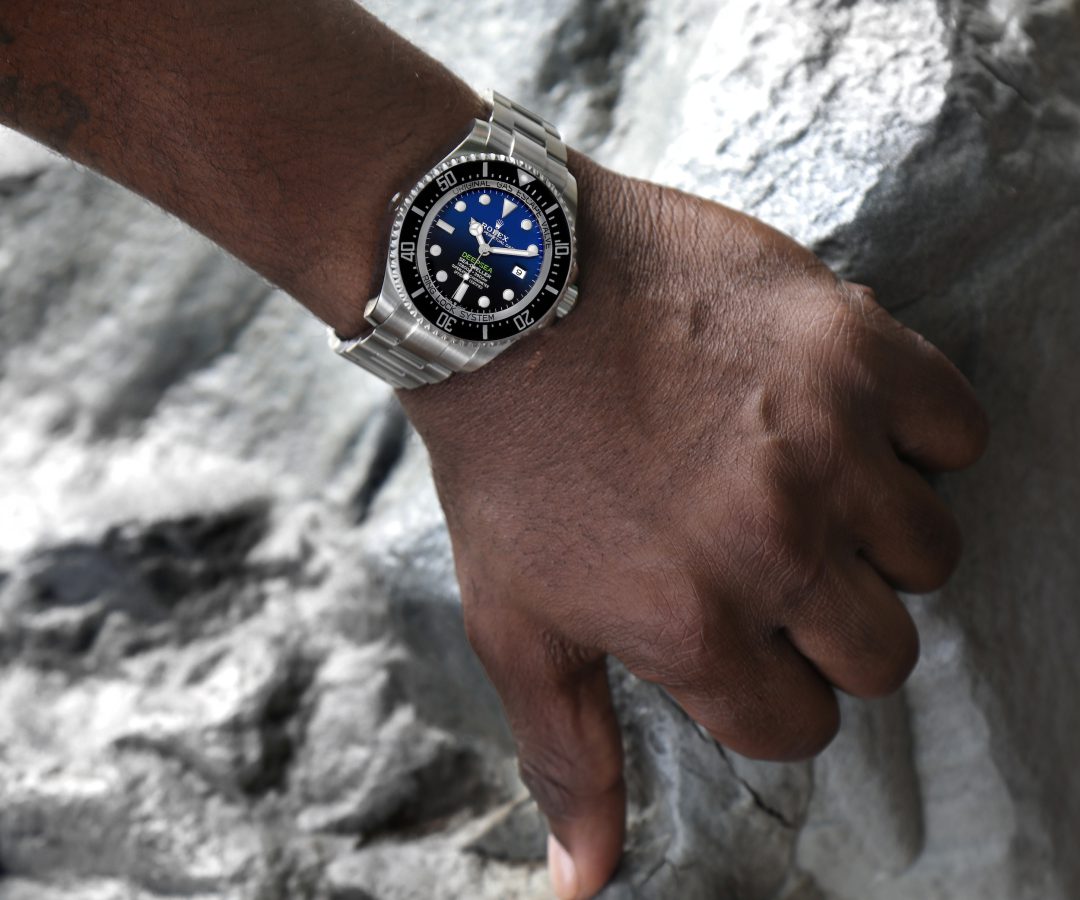 All Rolex Deepsea watches are tested for resistance to extreme conditions
All Rolex Deepsea watches are tested for resistance to extreme conditions
If you’re looking for a dive watch, this is one of the most important factors to consider. A true dive watch should be able to withstand condensation and temperature changes while underwater.
If your dive watch is going underwater regularly, then it needs to be able to withstand temperatures below freezing as well as above 100°F without damage or malfunctioning parts — like batteries dying out too fast from excessive heat exposure during summer months when wearing them normally would make them uncomfortable anyway!
Part of the testing for temperature resistance involves thermal shock. Extreme temperature changes can cause serious damage and the dive watch should be resistant to this. The watch in question is submerged in water that is heated to 104 degrees F, after 10 minutes, the watch is then put in a water bath that’s at 41 degrees F for another 10 minutes. There cannot be more than 1 minute between the baths. The last 10 minutes of the test, the watch goes back into the hot water bath.
Before and after the underwater reliability test mentioned later and the above thermal shock test, the watch also goes under a condensation test. This is done to see if any moisture got into the case. The timepiece is heated on a plate to around 100 degrees F +/-. When the watch reaches the same temperature, water is dropped on the crystal. In a minute, the water is wiped away and they check for condensation inside the case.
<>
Measurement of Elapsed Time
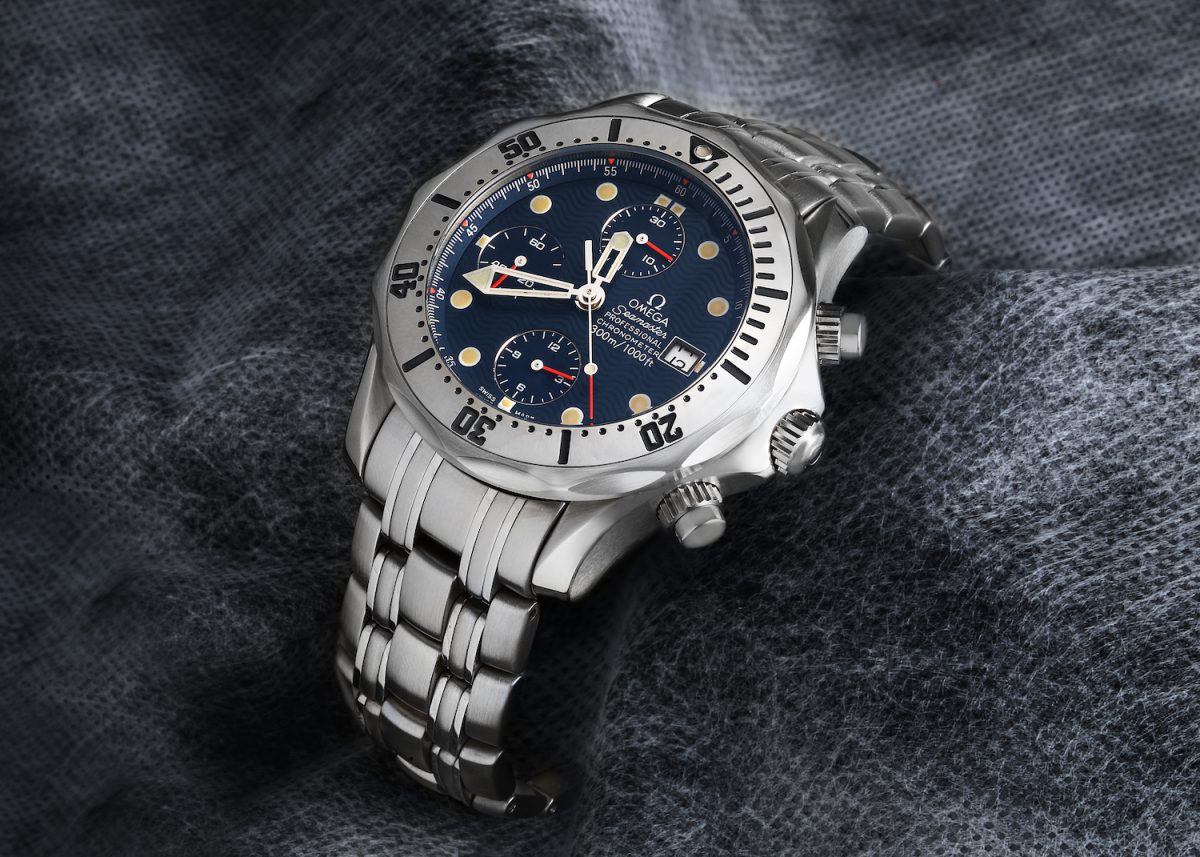 The Omega Seamaster Diver 300M ref. 2598.80.00 has a chronograph complication
The Omega Seamaster Diver 300M ref. 2598.80.00 has a chronograph complication
The measurement of elapsed time is a crucial function of any dive watch. A chronograph or stopwatch is the most common way to measure elapsed time, but some watches also have timers that count down from an initial setting. Some models have date displays, day/night indicators, and power reserve indicators as well.
Your dive watch, to be considered a true dive watch, must be able to track time up to 60 minutes. Whether it’s a digital display or a marked bezel, you must be able to track a pre-ordained amount of time. The bezel must be marked at 5-minute intervals.
<>
Legibility
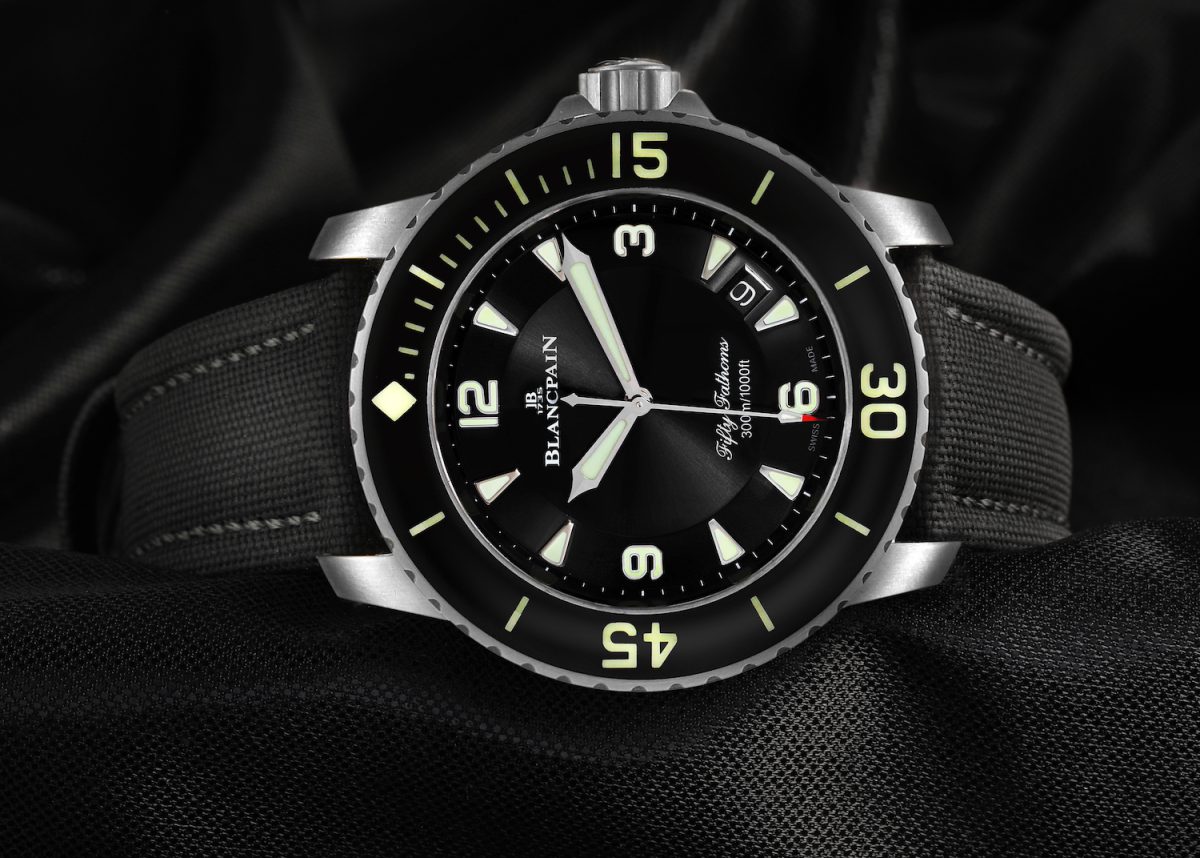 The Blancpain Fifty Fathoms has SuperLumiNova on its hands, hour markers, and bezel
The Blancpain Fifty Fathoms has SuperLumiNova on its hands, hour markers, and bezel
At this point, you may be wondering why legibility is so important. After all, if you’re diving with a watch that can’t clearly display the time or other key information, what good is it?
Well, let’s say there’s an emergency while you’re underwater and your dive partner needs to know exactly what time it is in order to make an immediate decision about whether he should surface without you. If his dive watch face isn’t easy to read (or worse yet–if he doesn’t have one at all), then his ability to make that critical decision could mean the difference between life and death for both of you!
The best way for any watchmaker who makes “true” dive watches would be by using large dials with luminous hands and markers; clearly labeled subdials; visible date windows; high contrast dials; large watch faces and even the seconds hand must be highly visible.
<>
Underwater Reliability
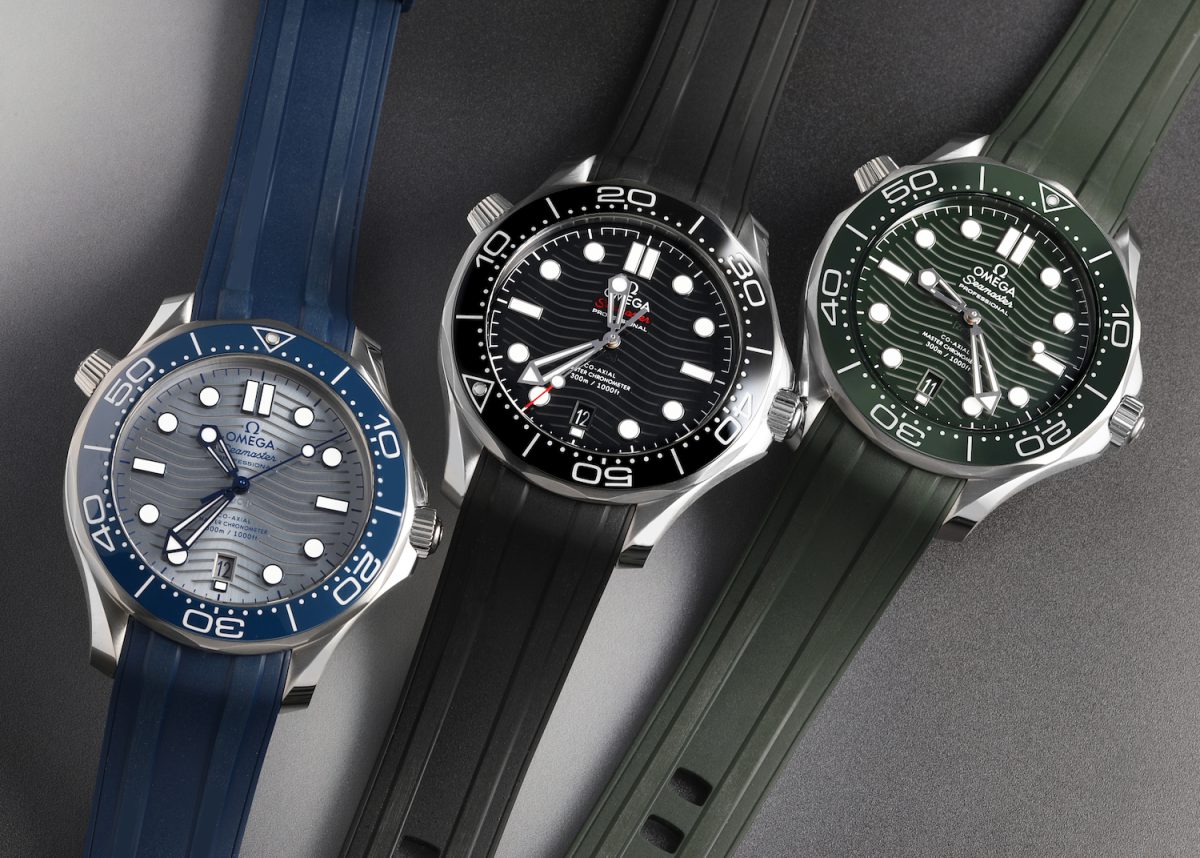 The Omega Seamaster Diver 300M is has a water resistance rating of 300 meters
The Omega Seamaster Diver 300M is has a water resistance rating of 300 meters
When you’re shopping for a dive watch, it’s important to know what you’re getting into. As with any other type of watch, many factors affect its performance underwater — and since dive watches are designed specifically for use in extreme environments, these factors can be especially crucial.
One of the most important things to consider when buying a dive watch is its water resistance rating: how deep does it go? Some watches will advertise their depth capabilities up to 100 meters (330 ft), while others might only go down as far as 30 meters (100 ft). A true dive watch must be resistant to at least 100m or 330 ft.
Not all brands test their watches in exactly the same way (sometimes even within their own lineups), so make sure that whatever number you see on paper matches up with what they claim on their website or packaging before making your decision!
The ISO 6425 reliability underwater test requires the watch to be immersed in water (about 12 inches) for 50 hours. The water is kept at a temperature of around 70 degrees F +/-. After the 50 hours is up, the watch is assessed for function and damage.
<>
Magnetic Resistance
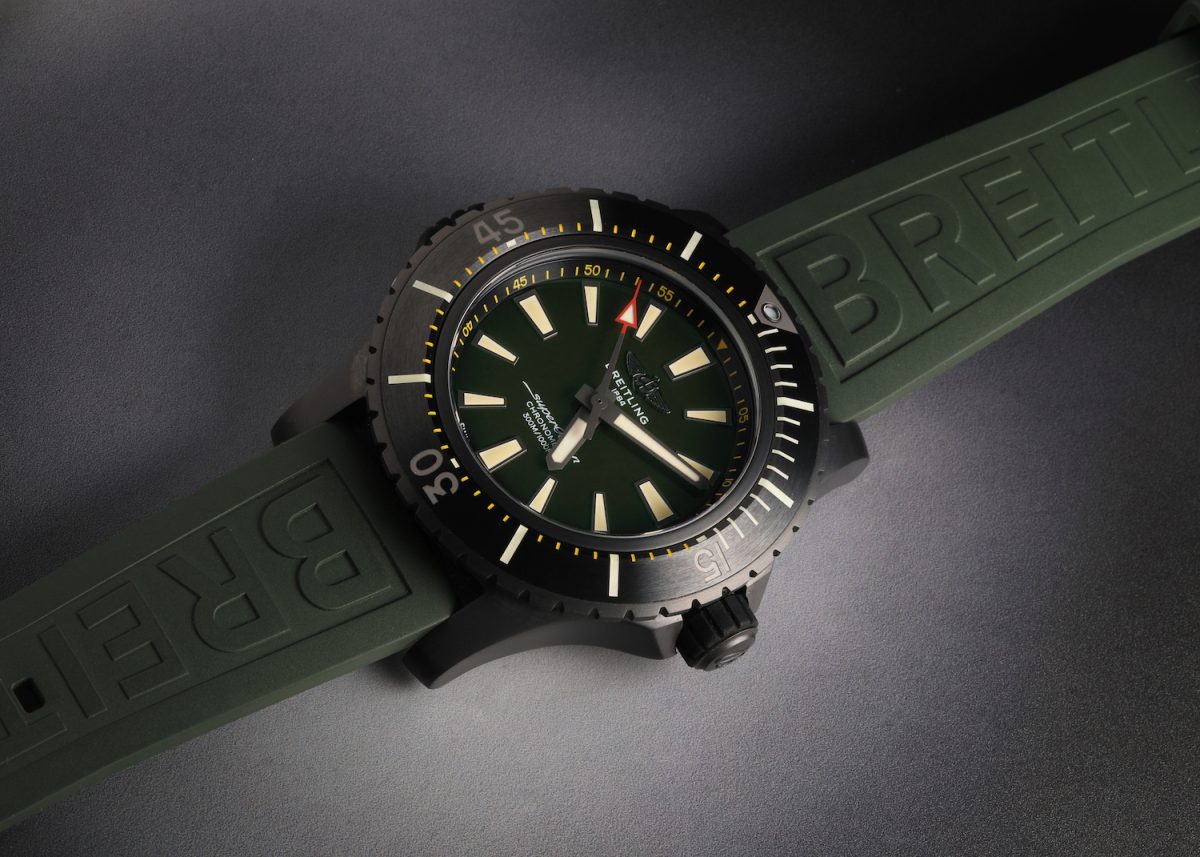 The Breitling Superocean 48 ref. V17369 has an anti-magnetic inner case
The Breitling Superocean 48 ref. V17369 has an anti-magnetic inner case
The ability of a watch to resist magnetic fields is important for two reasons:
To protect the movement from being affected by magnetism
To protect the watch movement from stopping
While ISO 6425 itself has no standards for magnetic resistance, it incorporates ISO 764 and ISO 1413 which cover requirements for magnetic resistance and shock resistance.
ISO 764 requires a test for magnetic resistance. The watch is placed into a magnetic field of 4,800 amperes. This field has three different axes to cover different angles over a minute of time each. The timepiece must maintain its accuracy to within 30 seconds +/- per day. Measurements are taken before and after the test to check this accuracy. If the watch gains or loses less than 30 seconds over the course of the day, then it passes.
<>
True Dive Watch – Final Thoughts
The dive watch, as it is known today, was developed as a result of the need for a timepiece that could withstand the rigors of underwater exploration. The first dive watches were created in the 1930s and 1940s by Rolex and Omega before they gained popularity among other brands such as Seiko and Citizen over the following decades.
Today, dive watches are still made with similar standards in mind: water resistance up to 100 meters (330 feet), legibility under low light conditions (and sometimes even complete darkness), magnetic resistance so they don’t interfere with compass readings or other equipment nearby (such as sonar systems). The word ‘Divers’ can be stamped on the watch when it passes the standards of the ISO 6425.
These functions make them suitable for use by both professional divers who require accuracy when calculating decompression times or navigating through caves without being able to see where their hands are going; but also, amateur hobbyists who simply want a stylish accessory that looks good on their wrist while swimming laps at the local pool! Check out our wide range of dive watches at SwissWatchExpo.com.

